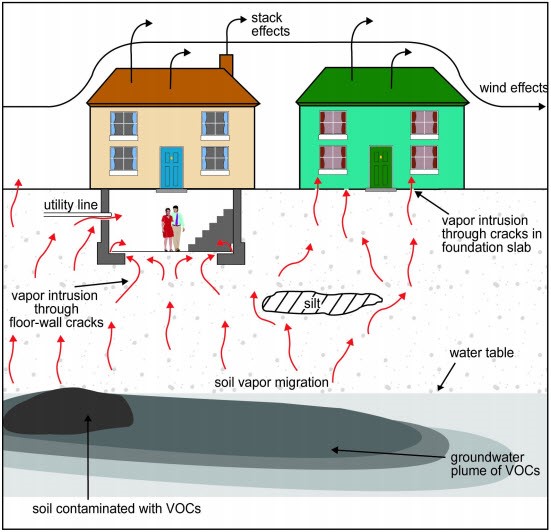Vapor Intrusion is a process in which chemicals of concern, more specifically Volatile Organic Compounds (VOCs), find a pathway to migrate to indoor air above contaminated sites. A Vapor Encroachment Screen (VES) is often times utilized to identify a Vapor Encroachment condition (VEC). A VEC is likely presence of chemicals of concern vapors in the vadose zone of the subject property. A VES is conducted in general conformance of the ASTM Standard E2600-15 Standard Practice for Assessment of Vapor Intrusion into Structures on Property Involved in Real Estate Transactions. A Flame Ionization Detector (FID) meter is utilized to evaluate potential areas of concern throughout the subject property. A FID meter is an instrument that measures the concentration of organic compounds in a gas stream. A Vapor Encroachment Assessment Tool (VEC App) provided by a data company can be utilized to effectively screen the subject property for vapor encroachment risks. The VEC App provides access to current government records, United States Geological Survey (USGS) contour lines and a geo-referenced USGS topographic map, United States Department of Agriculture (USDA) soils data, a current aerial photograph, exclusive data provided by the data company, and proprietary gas station and dry cleaner data. The Conceptual Site Model (CSM) portrays the current understanding of site-specific conditions, including the nature and extent of contamination, contaminant fate and transport routes, potential receptors, and contaminant exposure pathways.

SSCI conducts VES for clients prior to real estate transactions and to assess environmental concerns in existing structures. A VES is a great way to further the environmental due diligence performed on a potentially contaminated site, and often accompanies a Phase I Environmental Site Assessment.